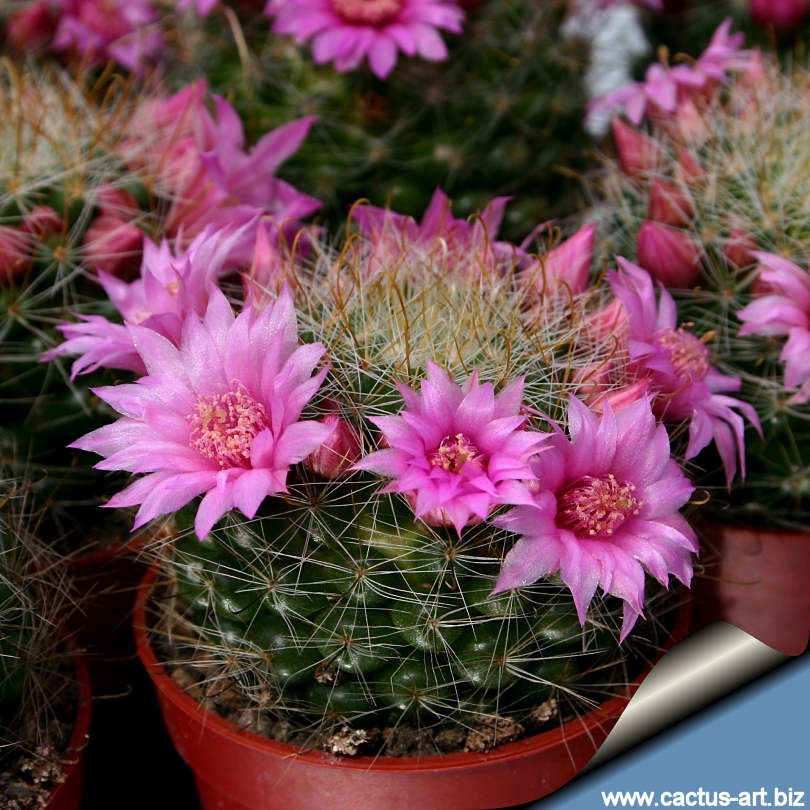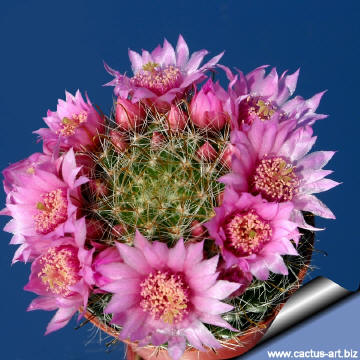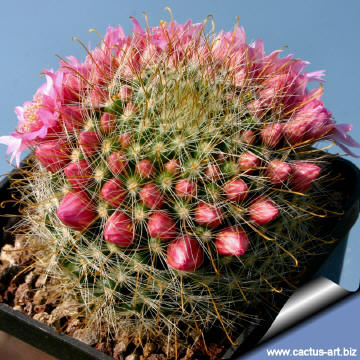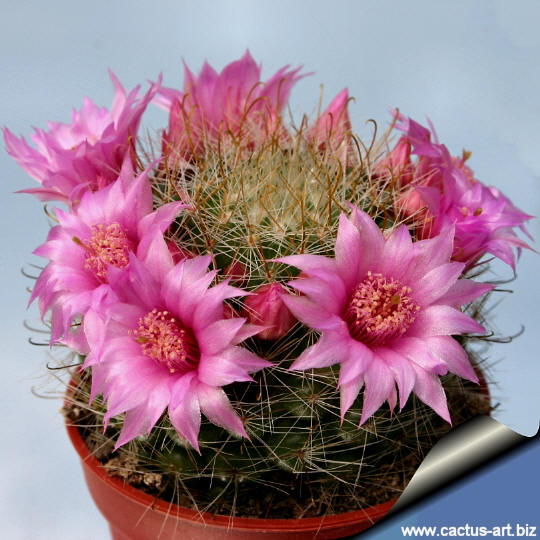|
|
|

Mammillaria zeilmanniana
This is a popular species with flowers typically carmine violet
to purple-pink in color, seldom white.
It is one of the most prolific bloomers among the Mammillarias.
|
 |
 |
|
. |
 |
 |
|
Propagation: Division, direct sow after last
frost.
|
|


Advertising
|
|
|
|
|
Family:
Cactaceae (Cactus
Family)
Scientific name:
Mammillaria
zeilmanniana
First description by Boedeker, Monatsschr. Deutsche Kakt.-Ges.
3: 227 (1931)
Common Names include: Rose Pincushion Cactus
Origin:
San Miguel de Allende, Guanajuato state, central Mexico.
(Until 1988 Mammillaria zeilmanniana had never been found in its natural
habitat by anyone else since its original discovery in the late 1920's
by Erich Georgi of Saltillo, a collector and exporter of exotic plants.
It was then re-discovered after a long search in a canyon complex west
of San Miguel de Allende in Mexico thriving in an isolated
microenvironment.)
Habitat: Grows in a very restricted area in a narrow passage
with sheer volcanic rock, large trees and flowing water offered shade
and humidity in an otherwise very dry environment. It roots grow in the
thin layer of moss and fern growth that covered the lower, shaded
vertical rock that formed the canyon side. Altitude 1.950 m
Conservation status: Listed in
CITES appendix 2.
Synonyms:
- Mammillaria crinita ssp. zeilmanniana. (Boed.)
C.E.Glass
- Mammillaria crinita f. zeilmanniana
- Neomammillaria zeilmanniana
- Chilita zeilmanniana
- Ebnerella zeilmanniana
|
Description: Plants
in cultivation are heavily clustering. (while in its natural environment
it simple and rarely branching)
Stems: Glossy green, spherical or oval to short cylindrical, 6-12
cm high, 4.5-8 cm in diameter.
Tubercles: Oval (Tubercle
arrangement: 13 – 21).
Areoles: Woolly when young.
Axil: Naked.
Radial spine: About 15 - 18, radiating, finely bristly or
hairlike white, pubescent.
Central spine: 4, the upper 3 straight, the lowest hooked,
slightly longer than the radials, reddish brown.
Flower: Up to 2 cm, pale pinkish violet or purple, stigmas
yellowish. (The white flowered
sport of M. zeilmanniana is produced in
cultivation and not known to occur in the wild)
Blooming season (Europe): The flowers can come at any time of the year.
Fruit: Whitish green to pale pink.
Seed: Black.
|
|
|
|

This is one of the easiest species to grow
blooming abundantly throughout the year.
Cultivation: Requires excellent drainage provided by porous
cactus soil. We suggest repotting every 2-3 years. Prefers bright light
and ample airflow. Outside it likes full sun or afternoon shade, inside
it needs
bright light, and some direct sun.
Water the soil abundantly when it is dry to the touch.
Allow soil to drain thoroughly before watering again. Do not water much
in the winter (Rot prone). Protect from frost.
But it's hardy to -6°C if kept dry. During the
growing season enrich the
soil using a fertilizer rich in potassium and phosphorous, but poor in
nitrogen, because this chemical element doesn’t help the development of
succulent plants, making them too soft and full of water.
Easily clustering and easily flowered. Most plants will offset readily,
and clumps can be produced in a very few years.
|
|